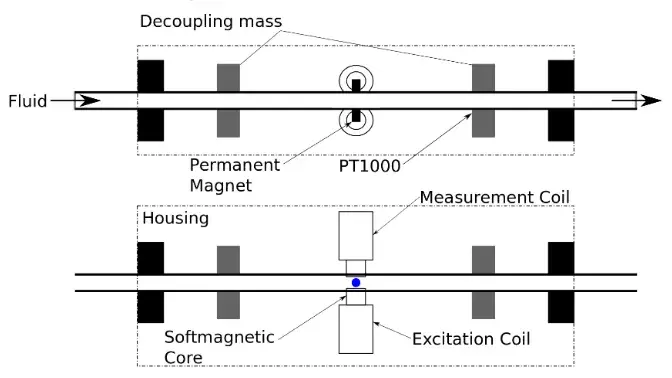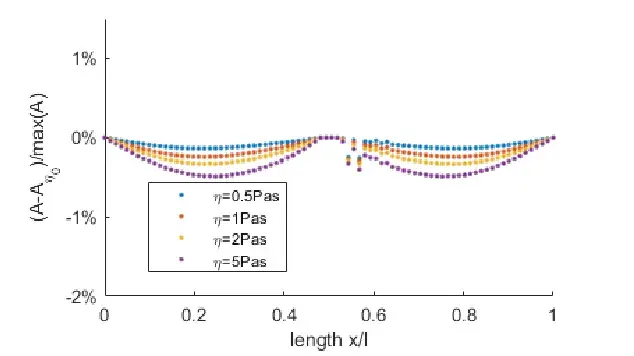Investigation of Modal Distortion on Torsional Resonators
Monitoring fluid properties such as viscosity is crucial in many industrial processes. Using mechanical resonators allows for measuring the viscosity in an online manner, which enables a quick response and maintains a high quality of a chemical or biochemical process. To develop these sensors, accurate models that fully describe the fluid-structure interaction of the fluid with the resonator are needed.
The torsional resonator investigated in this study is a tubular resonator comprised of a tube, permanent magnets and decoupling masses, as schematically shown in figure 1. The working principle of the sensor is based on the excitation of a torsional mode, and the subsequent measurement of the oscillation. Based on the measured signal, the damping and resonance frequency are determined. The resonance frequency and damping can be related to the fluid’s viscosity. An important aspect of resonator modelling is the interaction of the resonating structure with the fluid. To fully resolve this interaction, the sensor was modelled using a strong fluid-structure interaction model which was solved using LS-DYNA. Thereby, the Navier-Stokes equations as well as the structural equations were solved simultaneously. The benefit of this method is that the distortion of the structural mode can be considered. This effect was neglected in previous models, where the resonator was modelled in the frequency domain using a weak fluid-structure interaction. To investigate the effect of modal distortion, the tubular sensor was modelled with different inertial masses in the centre. The inertial mass represents the permanent magnets and allows to vary the ratio between inertial forces and fluid forces. Thus, with a lower inertial load, the fluid has a larger impact on the mode, which may result in a larger modal distortion. The results of the simulation indicate, that the fluid slightly deforms the resonating mode. However, the magnitude of this distortion is small, meaning the relative modal distortion for a low viscous fluid is below 0.5 % even for very high fluid viscosities. It was shown that strong fluid-structure interaction can be used to model a torsional resonator and consider effects such as modal distortion. However, the effect of the modal distortion is small, and in most cases, including the tubular resonator of this study, it can be neglected.

